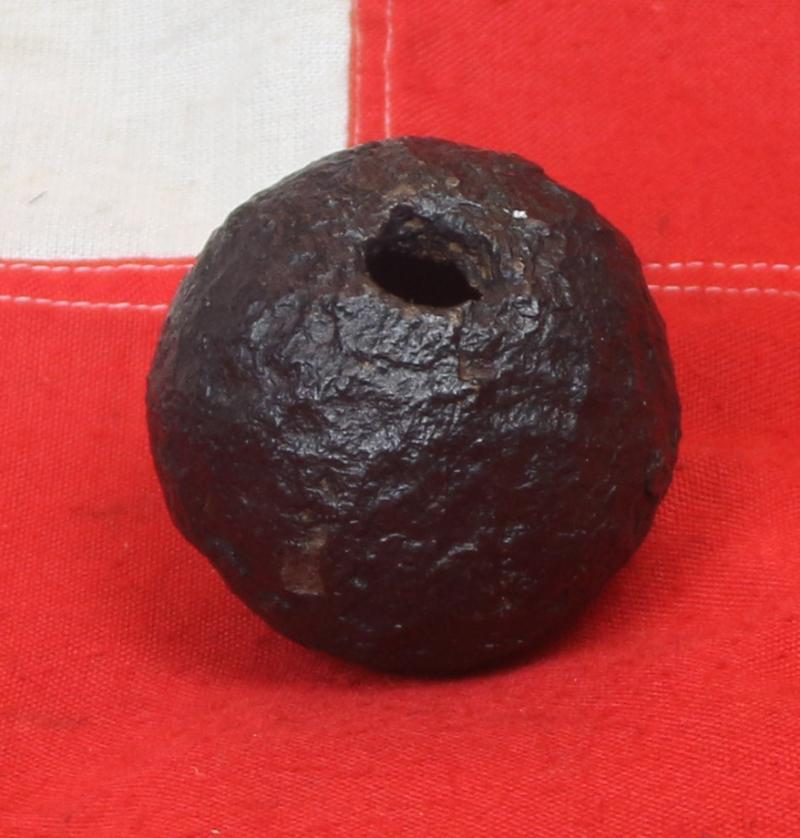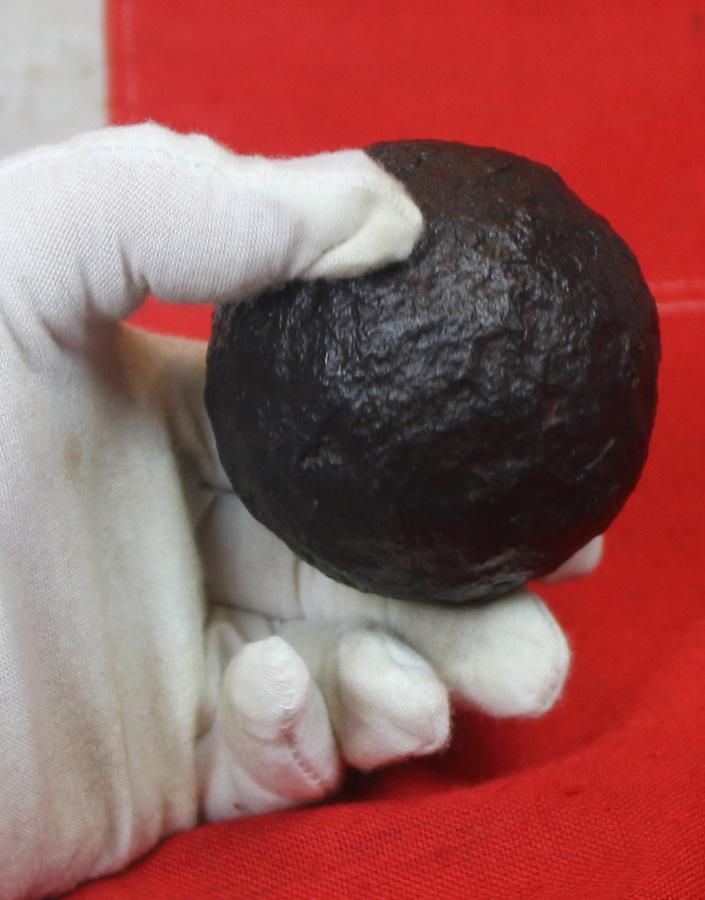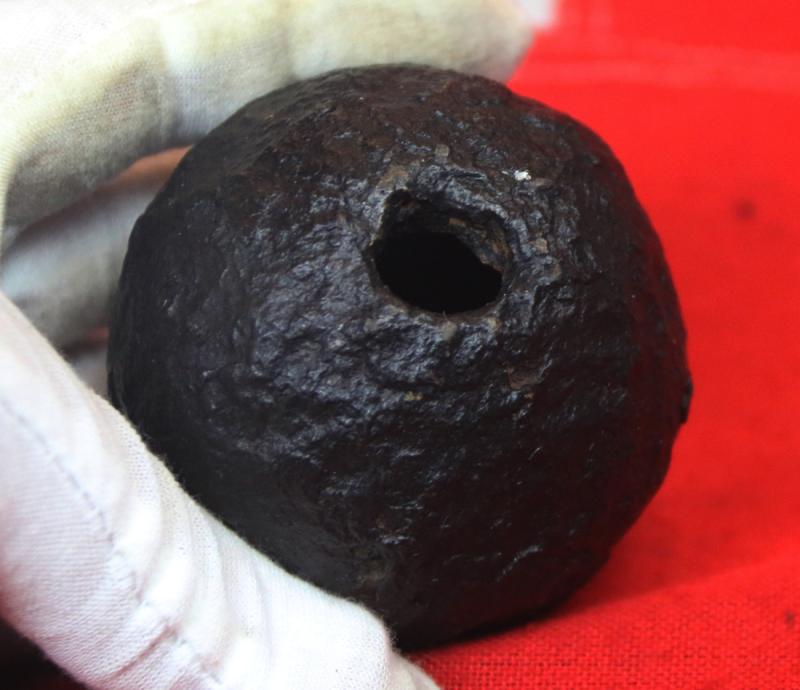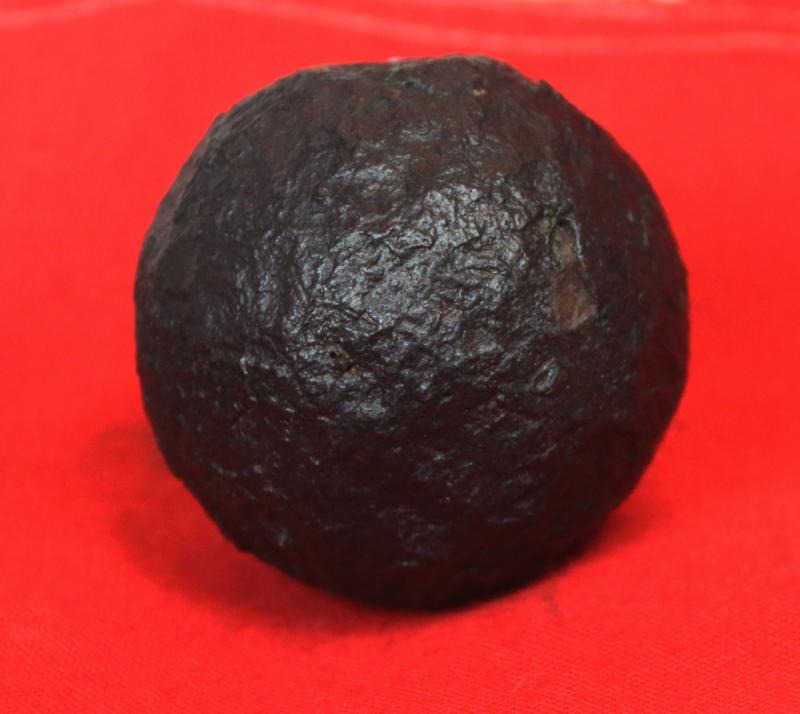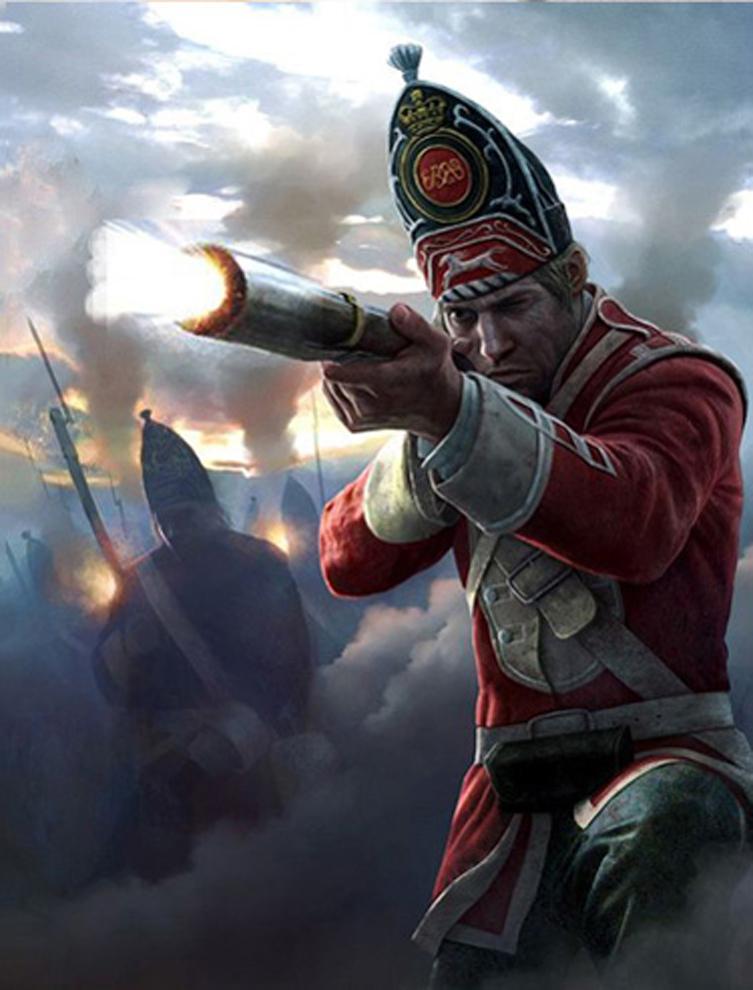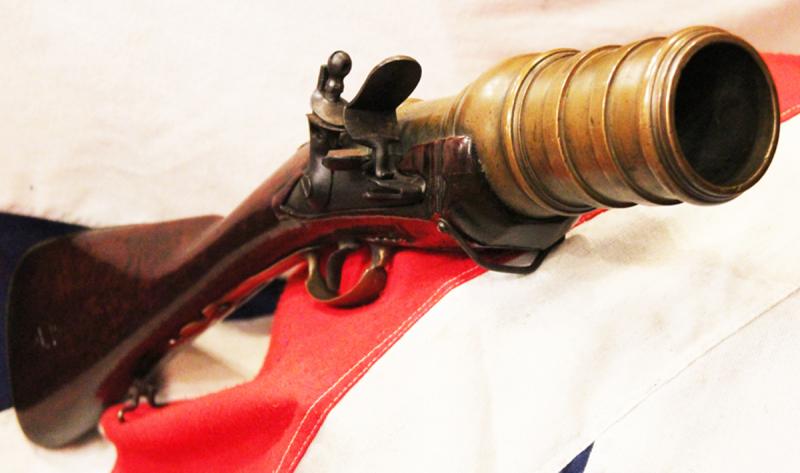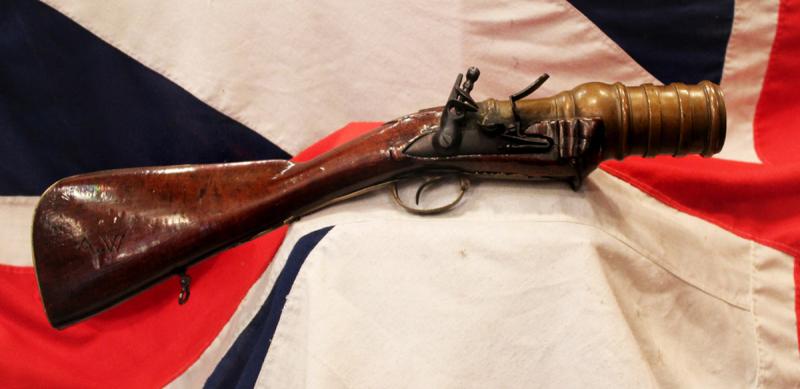A Most Rare 18th Century 'Cohorn' Exploding Grenade. From an Early Cohorn, Grenade Launcher Hand Mortar Gun
We show the cohorn's exploding grenade or mortar bomb, alongside the type of mortar launcher from the early 18th century that would have fired it. It is a very rare cohorn launcher gun we sold a few years ago.
The grenade is hollow cast iron, around 2.55 inches across, and would originally be filled with gunpowder, sealed with a wooden plug and fuse. The grenade would be lit before firing, dropped into the barrel of the launcher and then fired/launched against the grenadier's enemy. It was an extremely dangerous form of weapon as the lit grenade could easily ignite the gun powder in the cohorn launcher 's barrel and blow all asunder instantly.
The hand mortar is a firearm that was used in the late 17th century and 18th century to throw fused grenades. The action was similar to a flintlock, matchlock, or wheellock firearm (depending on the date of production), but the barrel was short, usually less than 2 inches (5 cm) to 4 inches (10 cm) long (though some are reported to have barrels up to 13 inches (33 cm) long), and had a large bore to accommodate the grenade; usually between 2 and 2.5 inches (5 to 6 cm).
Between 1672 and 1740, the Royal Foundry of Berlin (Königliches Gießhaus zu Berlin) produced 302 hand mortars (Handmörser). Additionally, a mortar at the Museum of Artillery in Woolwich, Great Britain bears the inscription Fondeur á Strasbourg (made in Strasbourg (France)) and several other surviving pieces bear the coat of arms of Württemberg indicating that they might have been made there. The first references to the type of grenade used in a hand mortar occur in a 1472 work entitled Valturius, where an incendiary prototype may have been produced. However, widespread use of the explosive grenade does not occur until the early-to-mid-16th century under Francis I of France. An early casualty of this type of grenade was Count de Randan who died of shrapnel wounds to the legs from a grenade during the Siege of Rouen (probably the battle of Issoire) in 1562. Explosive grenades were made from brass, glass, and possibly clay, and incendiary projectiles were made from canvas, however, Nathanael Nye, Master Gunner of the City of Worcester in a work entitled Art of Gunnery published in 1647, remarks that the soldiers of his day were not fond of handling the grenades because they were too dangerous. While there are substantial records of infantry units called grenadiers throughout the 18th century in Europe, these units generally threw the larger sized grenades by hand, but maybe a few men of the regiment could be armed with launchers firing small grenades such as this. After priming the firearm and adding the gunpowder, the shooter would light a grenade fuse, place the grenade in the muzzle of the mortar, then fire it at the enemy. However, accidents could occur if the weapon misfired and the lit grenade remained in the barrel. Additional modifications attempted to light the grenade using the burning gunpowder, but accounts say that the fuse would be forced into the grenade which would explode immediately.
The low number of surviving specimens of this firearm indicate that it was not a popular weapon, possibly due to the safety issues. In his essay on the weapon, Hewitt opines that the mortar is among a variety of "projects for destruction which have never destroyed anything but the fortunes of their inventors". At least one version of the hand mortar was probably invented by John Tinker in 1681. However, his mortar may have been an improvement on an earlier piece. A reference to this mortar may have appeared in a work entitled Ancient Armour which refers to a tinker's mortar. Another account refers to a hand mortar as a cohorn, and attributes its invention to a Dutch engineer, Menno Van Coehoorn, who lived from 1641 to 1704. Hand Mortars were also to be found in the New World. References to a hand mortar being transferred in Maryland are found in the record of The Proceedings of the Council of Maryland in 1698. Another account in the journal of Alexander Henry the younger tells of a hand mortar (called a cohorn; after Menno van Coehoorn) being loaded with a pound of powder, 30 balls, and fired in an action against Sioux indians in 1808.
Another reference to the use of cohorns in the New World can be found in The Life of Joseph Brant (Thayendanegea) including the Border Wars of the American Revolution by William L. Stone (two volumes) published Albany NY 1865. Stone in describing Sir William Johnson's Niagara campaign of 1759 notes the following: "The youthful warrior likewise accompanied Sir William during the Niagara Campaign of 1759, and in the brilliant achievements of the Baronet, after the chief command had devolved upon him upon the death of General Prideaux, is said to have acquitted himself with distinguished bravery. General Prideaux, commanding the expedition, was killed by the accidental explosion of a cohorn on the 20th of July…" (Stone, Vol 1, p. 20)
It has spent over two days in the workshop being cleaned and conserved. Weight 1.6 lbs
Code: 24872
295.00 GBP

